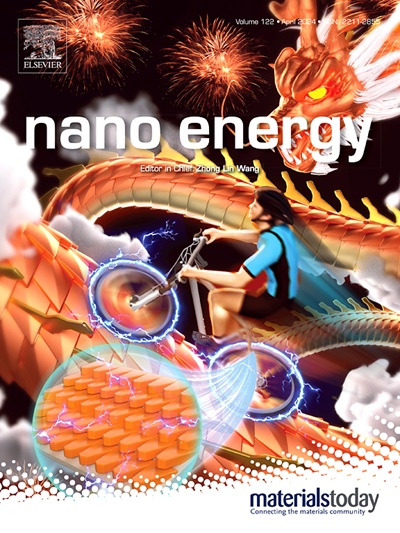Double-Side Improved Charge Extraction via 2D Perovskite for Efficient Inverted Perovskite Solar Cells
IF 16.8
1区 材料科学
Q1 CHEMISTRY, PHYSICAL
引用次数: 0
Abstract
Modulating perovskite heterointerface is critical to enhance charge extraction and improve photovoltaic performance of perovskite solar cells (PSCs). Herein, 2D perovskite is integrated at double sides of 3D perovskite to concurrently enhance charge extraction at both hole- and electron-selective interfaces, enabling high-performance inverted p-i-n PSCs. Notably, the bottom 2D perovskite forms cascade energetics at 3D perovskite layer and hole transport layer interface for largely diminishing thermionic losses for hole extraction, passivates defects at the bottom heterointerface, and enhances epitaxial crystallization of the upper 3D perovskite film. It is revealed that the top 2D perovskite that improves energetic alignment between 3D perovskite layer and electron transport layer, effectively promotes electron extraction at the top heterointerface. With double-side 2D perovskite modification, the nonradiative recombination losses are significantly suppressed simultaneously at hole- and electron-selective contacts in one device. Consequently, the inverted PSCs with such 2D/3D/2D modification achieve a champion efficiency 25.25% with excellent stability, which remarkably surpasses the efficiency 24.58% of the devices with the widely used 3D/2D heterojunction at the top heterointerface.

求助全文
约1分钟内获得全文
求助全文
来源期刊

Nano Energy
CHEMISTRY, PHYSICAL-NANOSCIENCE & NANOTECHNOLOGY
CiteScore
30.30
自引率
7.40%
发文量
1207
审稿时长
23 days
期刊介绍:
Nano Energy is a multidisciplinary, rapid-publication forum of original peer-reviewed contributions on the science and engineering of nanomaterials and nanodevices used in all forms of energy harvesting, conversion, storage, utilization and policy. Through its mixture of articles, reviews, communications, research news, and information on key developments, Nano Energy provides a comprehensive coverage of this exciting and dynamic field which joins nanoscience and nanotechnology with energy science. The journal is relevant to all those who are interested in nanomaterials solutions to the energy problem.
Nano Energy publishes original experimental and theoretical research on all aspects of energy-related research which utilizes nanomaterials and nanotechnology. Manuscripts of four types are considered: review articles which inform readers of the latest research and advances in energy science; rapid communications which feature exciting research breakthroughs in the field; full-length articles which report comprehensive research developments; and news and opinions which comment on topical issues or express views on the developments in related fields.
 求助内容:
求助内容: 应助结果提醒方式:
应助结果提醒方式:


